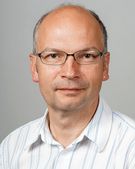TraNQuIL2 - Toward prevention of health effects from acute and chronic noise exposure
Project Abstract
Epidemiological research in the last decade has revealed associations between various cardiometabolic diseases and road, railway and aircraft noise. However, still little is known about mental health effects and most effective interventions to reduce health burden from transportation noise exposure.
Overall objective: The study will address several important research questions in relation to acute and long-term health effects from transportation noise to enhance our understanding of effective individual and population-level prevention measures.
Specific aims:
- To investigate acute effects of military aircraft noise on mental health in patients at a psychiatric clinic located near a military airport.
- To elucidate the interplay of long-term road traffic noise exposure and physical activity for various cardiometabolic biomarkers in a sample of healthy adults.
- To calculate burden of disease from transportation noise exposure based on most recent evidence from Switzerland and the international epidemiological literature.
- To evaluate preventive effects of noise barriers and soundproof windows on cardiovascular mortality.
Methods: Acute noise exposure in a psychiatric clinic located about 5 km from a military airfield (aim 1) will be prospectively measured from 2021 onwards and retrospectively modelled for 2015-2020 based on daily number of flights, aircraft type, air route, and noise footprint. Using a time series approach, acute noise exposure will be linked to acts of aggression events collected systematically during the daily clinic routine since 2015 as well as daily hypnotic drug consumption and systematically collected mental health symptoms data of the patients.
In a sample of 650 individuals in the age range of 20 to >80 years, mediation analysis will be conducted to obtain a better understanding of the preventive role of physical activity and sleep for the association of modelled road traffic noise exposure at home and early markers of cardiometabolic disease (aim 2). This rich dataset will allow for a high number of relevant covariables to be included in the analysis.
Burden of disease from noise (aim 3) will be directly estimated from the nationwide Swiss National Cohort for cardiovascular diseases and by means of standard health impact assessment methods for all other relevant outcomes of interest.
A natural experiment approach will be retrospectively applied to the data from the Swiss National Cohort to quantify changes in cardiovascular mortality risk ratios after implementation of noise barriers and sound insulation windows (aim 4). To do so, we will implement spectral propagation algorithms in current noise models for Swiss-wide exposure assessment to account for the highly frequency dependent diffraction around noise barriers. In the analysis, we will also consider changes in noise exposure from low noise pavements, modifications of large infrastructure and moving home.
Expected results and broader impact: Extensive analysis of early markers of cardiometabolic disease in connection with physical activity will illuminate whether and to what extent noise effects are preventable at an early stage, which is relevant for individual prevention. In terms of structural prevention, an estimated 350,000 and 400,000 individuals have respectively profited from noise barriers and sound insulation windows in Switzerland the last 20 years. This study will showcase a unique analysis designed to directly evaluate the health effects of these noise prevention measures. Finally, it will also address acute effects on mental health in a vulnerable population of psychiatric patients to inform strategies for effective mitigation and adaptation measures in the daily clinical routine.
Project team:
Empa: Beat Schäffer, Jean Marc Wunderli;
Sport and Exercise Medicine, Department for Sport, Exercise and Health, University of Basel: Arno Schmidt-Trucksäss;
Privatklinik Meiringen: Charlotte Pervilhac, Thomas Müller;
Swiss TPH: Danielle Vienneau, Martin Röösli (principal investigator)
Main Applicant(s)
Related Publications
All PublicationsVienneau D, Wicki B, Flückiger B, Schäffer B, Wunderli J.M, Röösli M. Long-term exposure to transportation noise and diabetes mellitus mortality: a national cohort study and updated meta-analysis. Environ Health. 2024;23:46. DOI: 10.1186/s12940-024-01084-0
Wicki B, Vienneau D, Schäffer B, Müller T.J, Raub U, Widrig J, Pervilhac C, Röösli M. Acute effects of military aircraft noise on sedative and analgesic drug administrations in psychiatric patients: a case-time series analysis. Environ Int. 2024;185:108501. DOI: 10.1016/j.envint.2024.108501
Sørensen M, Pershagen G, Thacher J.D, Lanki T, Wicki B, Röösli M, Vienneau D, Cantuaria M.L, Schmidt J.H, Aasvang G.M, Al-Kindi S, Osborne M.T, Wenzel P, Sastre J, Fleming I, Schulz R, Hahad O, Kuntic M, Zielonka J, Sies H, Grune T, Frenis K, Münzel T, Daiber A. Health position paper and redox perspectives: disease burden by transportation noise. Redox Biol. 2024;69:102995. DOI: 10.1016/j.redox.2023.102995
Wicki B, Schäffer B, Wunderli J.M, Müller T.J, Pervilhac C, Röösli M, Vienneau D. Suicide and transportation noise: a prospective cohort study from Switzerland. Environ Health Perspect. 2023;131(3):37013. DOI: 10.1289/EHP11587
Vienneau D, Stafoggia M, Rodopoulou S, Chen J, Atkinson R.W, Bauwelinck M, Klompmaker J.O, Oftedal B, Andersen Z.J, Janssen N.A.H, So R, Lim Y.H, Flückiger B, Ducret-Stich R, Röösli M, Probst-Hensch N, Künzli N, Strak M, Samoli E, de Hoogh K, Brunekreef B, Hoek G. Association between exposure to multiple air pollutants, transportation noise and cause-specific mortality in adults in Switzerland. Environ Health. 2023;22(1):29. DOI: 10.1186/s12940-023-00983-y
Vienneau D, Saucy A, Schäffer B, Flückiger B, Tangermann L, Stafoggia M, Wunderli J.M, Röösli M, SNC study Group. Transportation noise exposure and cardiovascular mortality: 15-years of follow-up in a nationwide prospective cohort in Switzerland. Environ Int. 2022;158:106974. DOI: 10.1016/j.envint.2021.106974
